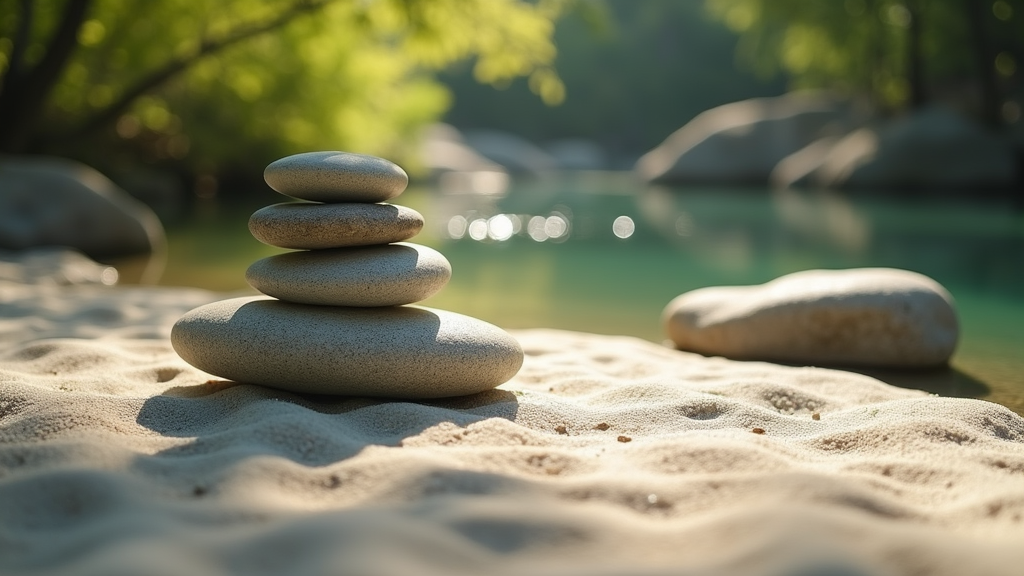If you ever feel like your day is a nonstop stream of emails, errands, and back-to-back to-dos, you’re definitely not alone. Modern life can be pretty overwhelming, and finding ways to slow down or just catch your breath can seem nearly impossible. That’s where mindfulness comes in. Even with a jam-packed schedule, you can carve out small moments for simple mindfulness practices that help you feel calmer, more present, and a bit more in control of your day. I’m sharing my best tips on weaving mindfulness into a busy lifestyle and how you can actually make it work. No need to retreat to a mountaintop or go offgrid.

Understanding Mindfulness in a Hectic World
Mindfulness is just about tuning into the present moment, noticing what’s happening inside and around you, and doing it all without judging yourself. You don’t need any special tools or expertlevel skills to practice mindfulness. Just a bit of willingness to slow down, even for a minute.
Stress levels are higher now than ever, thanks to work demands, social commitments, and family life. According to the American Psychological Association, over threequarters of adults report symptoms of stress, often related to work and daily responsibilities. Many people turn to quick fixes, but longterm relief often comes from building new habits, and mindfulness is one approach that fits right into the cracks of a busy lifestyle.
It can be easy to think you need to set aside hours for meditation or long walks in nature, but mindfulness is more practical than that. In fact, research from Harvard Medical School finds that just a few mindful minutes a day can lower stress and improve your general wellbeing.
Getting Started: Simple Mindfulness Practices for Busy People
Mindfulness doesn’t need to upend your schedule. Here are some approachable ways I like to sneak mindfulness into even my busiest days:
- OneMinute Breathing: Stop what you’re doing and pay attention to your breathing for 60 seconds. Inhale slowly, hold, then exhale. Try this between meetings or while waiting for your coffee.
- Mindful Commuting: If you drive, walk, or bike somewhere, notice the sights, sounds, and feels around you rather than defaulting to autopilot. Even noticing the rhythm of your footsteps counts.
- Mindful Eating: At lunch, put your phone away and really notice the color, texture, and taste of your food. Eating slowly (even for the first two bites) helps you enjoy your meal and recognize when you’re satisfied.
- FiveSenses CheckIn: Whenever you feel frazzled, pause and name one thing you can see, hear, smell, taste, and touch. This quick trick can bring you back to earth in no time.
Quick Guide: Weaving Mindfulness Into Your Routine
Making mindfulness stick takes regular practice, but you don’t need to block off huge chunks of your day. Here are a few tactics that work especially well for those of us juggling a lot at once:
- Tack It Onto a Habit: Attach mindful breathing or a body scan to something you already do, like brushing your teeth or waiting for the kettle to boil.
- MicroBreaks: Use natural breaks in your schedule for small mindfulness checkins. Right after sending a big email or before you pick up the phone is perfect.
- Calendar Reminders: Set a couple of recurring reminders throughout the day that simply say “Pause.” When they pop up, close your eyes and take three slow breaths.
- Mindful Movement: If sitting still isn’t your favorite, try mindful stretching, a short walk, or even standing up and rolling your shoulders with intention. Notice your body and how it feels moving.
- Tech Support: There are some great apps out there that offer quick, guided meditations and reminders, making it easier to fit mindfulness into your busiest days.
Fitting these practices around your existing commitments lets you build more mindfulness into your day without extra stress or effort.
Common Mindfulness Roadblocks (and How To Find Your Way Through Them)
Building new habits often comes with a few snags. If you’re trying to practice mindfulness and hit a wall, you’re in good company. Here are some common challenges along with a few of my favorite ways to move past them:
- Not Enough Time: If you think you’re too busy, start with just 30 seconds. Over time, it becomes easier to stretch those moments a little longer.
- Racing Thoughts: It’s normal for your mind to wander. Just notice the thought, and gently bring your attention back to your breath or your senses.
- Feeling Restless: Mindfulness doesn’t have to mean sitting still. Try a walking meditation or focus on mindful listening during a meeting.
- Forgetting to Practice: Tiny reminders go a long way. Put a sticky note on your laptop, set a daily alarm, or keep a smooth stone in your pocket to remind you.
Time Crunch
Most of us want longer stretches of “me time,” but that’s rarely practical on a daily basis. I usually go for micro mindfulness throughout the day. For example, I’ll focus on the sensation of water while washing my hands, or take one intentional breath before opening the next email.
Busy Mind
My mind races constantly. That’s pretty normal, especially during stressful times or after a long day. If my brain keeps hopping around, I try to get curious. I ask myself, “What am I thinking about?” before turning my attention back to what’s right in front of me.
Distractions
Phones, noises, and notifications can pull you out of a mindful moment. When I catch myself distracted, I try to notice what pulled me away, then bring myself back to the sensation of my breath or what’s around me, even if it’s only for a few seconds.
Negative SelfTalk
Mindfulness is about noticing without judgment. If I start thinking, “I’m no good at this,” I recognize that thought and let it pass. It helps me treat myself a little more kindly and that’s a win by itself.
Even a busy schedule can make space for mindfulness when you let go of perfection and focus on small, regular moments.
Taking Mindfulness Up a Notch: For Real Results
Once you’ve tried a few simple practices, you might be ready to get into it deeper. Here are options that fit squarely in a busy lifestyle but also give you all the benefits of mindful living:
Body Scan Meditation: Take five minutes at the end of your workday, lie back, and mentally scan your whole body from head to toe. Notice any areas of tension and let them relax.
Mindful Journaling: Jot down three things you saw, heard, or felt during your day. This reflection helps you notice small moments and appreciate the little things.
Mindful Tech Use: Before you pick up your phone, ask yourself why you’re reaching for it. This pause lowers mindless scrolling and keeps your attention on what matters.
These deeper habits help you recognize patterns that add to (or lower) your daily stress. I’ve found they make a difference, even if I’m only able to set aside a couple of minutes at a time.
Practical Mindfulness Tools for Every Day
Here are a few practical tools that can help you stay mindful throughout your day:
- Pause Button: Whenever you switch tasks, take a breath. It’s a small practice but has a big impact.
- Mindful Drinking: When you sip water, coffee, or tea, notice the warmth, taste, and sensation.
- Sensory Cues: Use items like essential oil roller or diffuser, a patterned mug, or a favorite piece of music as a sensory reminder to come back to the present.
I often rely on these tiny rituals to mark the transition from one task to the next, and they can easily fit into anyone’s routine. You might also want to try setting your workspace up with an object that grounds you visually, like a small plant or a photo, so whenever you look at it you remember to pause and breathe. This is a subtle yet effective way to weave mindfulness into even the busiest workday.
Frequently Asked Questions
Wondering how to make mindfulness work in your life? Here are some questions I get all the time:
Question: Do I need to meditate to be mindful?
Answer: Meditation is just one way to practice mindfulness. Focusing on your breath, being present while eating, or simply noticing sensations around you all count.
Question: Can I be mindful while multitasking?
Answer: It’s hard to be truly mindful when multitasking, since mindfulness thrives on attention. Picking just one thing to focus on, even for a minute, can recharge you and make multitasking less draining.
Question: What if I forget to be mindful?
Answer: Everyone forgets sometimes. The important part is noticing that you’ve drifted and gently trying again. Reminders and tiny rituals help a lot.
Mindfulness in Action: Everyday Benefits
Adding these practices to your schedule isn’t about being perfect. It’s about feeling a little more grounded, patient, and clearheaded during your busiest days. Studies published by the Mayo Clinic show that regular mindfulness helps with stress, sleep quality, and even physical health markers like blood pressure.
Small moments of mindfulness can really add up, making hectic days easier to handle and helping you enjoy life’s little wins, no matter how packed your calendar may be. The more you practice, the more you may notice your reactions softening and stressful moments feeling a bit more manageable. Mindfulness is not about eliminating chaos, but finding calm in the middle of it all. So the next time you feel overwhelmed, remember that even one mindful breath can make a difference. Bottom line: mindfulness is for everyone, and it can fit right into your busiest days. Give yourself permission to pause, reset, and be present—one moment at a time.
